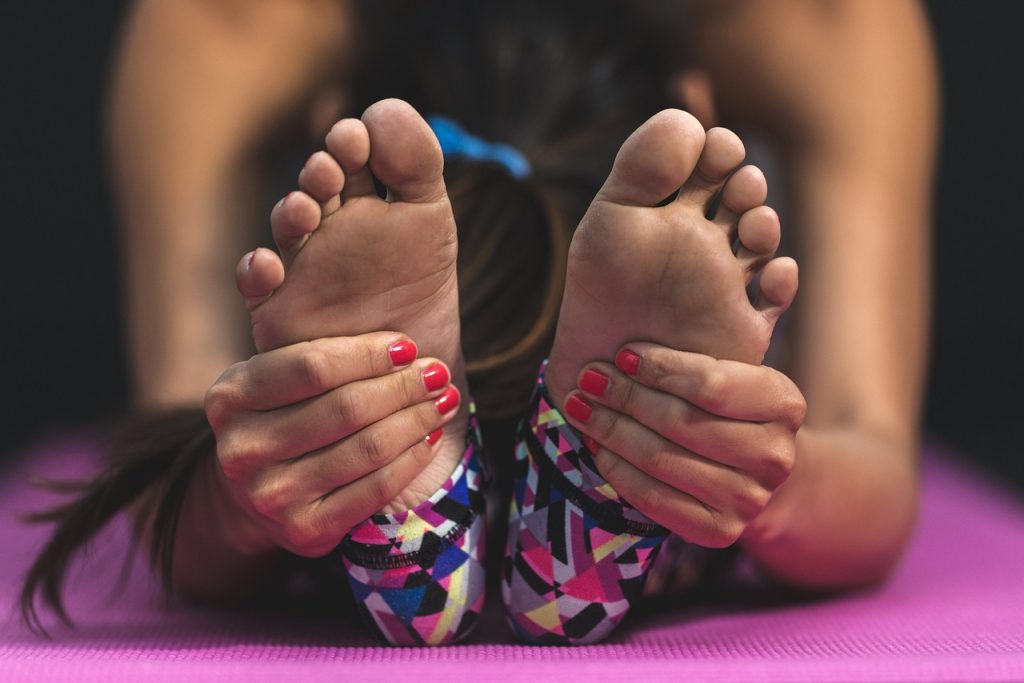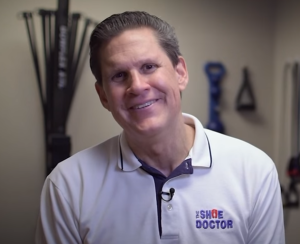Orthotics play a crucial role in managing hip pain, offering relief and support for daily activities. Understanding the basics of orthotics can make a significant difference in your hip pain management journey. Whether you’re an athlete or someone dealing with chronic discomfort, orthotics can provide stability and alleviate strain on your hips. By grasping how orthotics work and their benefits, you can take proactive steps towards a more comfortable and active lifestyle. Let’s explore the basics of orthotics and discover how they can improve your hip health.
What Are Orthotics?
Orthotics are custom-made devices designed to support and improve the function of various parts of the body. They come in different types, including foot orthotics for issues like flat feet and knee orthotics for conditions such as arthritis.
Orthotics can also be used to address hip pain by providing support and stability to the hip joint. These devices are often prescribed by healthcare professionals to help alleviate discomfort and improve mobility.
Benefits of Orthotics
- Alignment: Orthotics help in correcting alignment issues that may contribute to hip pain.
- Support: They provide additional support to the hip joint, reducing strain and pressure on the area.
- Comfort: Orthotics are designed to enhance comfort while walking or engaging in physical activities.
- Mobility: By improving the biomechanics of the lower body, orthotics can enhance overall mobility and function.
Orthotics can be particularly beneficial for individuals with conditions like osteoarthritis or those recovering from hip injuries. They work by redistributing pressure and ensuring proper alignment, which can significantly reduce pain and improve quality of life.
How Orthotics Work
Orthotics function by altering the distribution of weight and pressure on the foot, knee, or hip. By providing cushioning and support in specific areas, they help correct abnormalities in gait or posture that may be causing hip pain.
These devices are typically custom-made based on an individual’s unique anatomy and requirements. A podiatrist, orthotist, or physical therapist will assess the patient’s condition and create orthotics tailored to address their specific needs.
Orthotics can be worn inside regular shoes and are designed to be comfortable for extended periods. They are meant to complement existing treatments for hip pain, such as physical therapy or medication, by providing ongoing support and relief.
Custom vs. Prefabricated Orthotics
Custom orthotics are designed based on a detailed assessment of an individual’s feet, ensuring a precise fit that meets their unique needs. On the other hand, prefabricated orthotics are readily available and can be purchased over the counter without the need for customization.
When it comes to addressing hip pain, custom orthotics offer a more tailored solution by providing personalized support and correction for specific issues contributing to discomfort.
Maintenance and Care
Proper maintenance of orthotics is essential to ensure their effectiveness in managing hip pain. It is recommended to clean them regularly with mild soap and water, allowing them to air dry completely before use. Inspecting orthotics for any signs of wear and tear can help prevent further discomfort.
Common Causes of Hip Pain
Bursitis and Osteoarthritis
Bursitis, inflammation of the fluid-filled sacs cushioning joints, can cause sudden hip pain. Osteoarthritis, a common hip disorder, leads to painful muscle strain in the hip joint.
Injuries or overuse, often seen in athletes, can result in muscle injuries affecting the hips. Individuals with hip fractures may experience painful muscle strain in the hip area.
Age and Lifestyle Factors
As individuals age, the risk of experiencing hip pain increases. Factors such as joint inflammation and wear and tear on the hip joints contribute to painful muscle strain.
Lifestyle choices also play a crucial role. For instance, individuals engaging in activities that put excessive stress on the hips may develop painful muscle strain over time. Moreover, conditions like back pain and knee pain can lead to lingering foot pain, affecting the hips indirectly.
How Orthotics Help Hip Pain
Weight Redistribution
Orthotics play a crucial role in cushioning hip bursa by redistributing weight evenly across the foot. This redistribution can alleviate pressure on the hip joint, reducing stress and discomfort. By providing support and stability, orthotics help prevent excessive strain on the hips caused by poor walking habits or hip injuries.
Orthotics are designed to correct poor walking habits that can lead to hip pain. They can address issues such as overpronation or supination, which may affect the alignment of the lower body. Through proper alignment, orthotics help improve posture and gait, which in turn reduces the risk of hip injuries and discomfort. Orthotics can aid in preventing conditions like tendinitis or bursitis that commonly contribute to hip pain.
Posture and Gait Improvement
One of the key benefits of orthotics is their ability to enhance posture and gait. By providing support to the arches of the feet, orthotics help maintain proper alignment of the body. This improved alignment not only reduces strain on the hips but also promotes better overall body mechanics. As a result, individuals wearing orthotics may experience less fatigue and pain in the hips during daily activities.
Studies have shown that orthotics can be effective in managing hip pain associated with various conditions. Research has indicated that orthotic interventions can lead to significant improvements in pain levels and functional outcomes for individuals with hip discomfort. By correcting biomechanical abnormalities and enhancing shock absorption, orthotics contribute to better hip joint health and mobility.
Conditions Treated with Orthotics
Hip-Related Conditions
Orthotics play a crucial role in managing various hip-related conditions. Tendonitis in the hip, characterized by inflammation of the tendons, can benefit significantly from orthotic intervention. By providing support and alignment, orthotics help reduce strain on the tendons, alleviating pain and promoting healing.
Flat Feet and High Arches
Individuals with flat feet or high arches often experience hip pain due to improper foot mechanics affecting the hip joint. Orthotics address this issue by correcting foot posture, distributing pressure evenly, and improving shock absorption. This realignment not only relieves existing hip pain but also prevents future discomfort.
Post-Surgical Recovery
After undergoing hip-related procedures, such as surgery for osteoarthritis or traumatic arthritis, patients require specialized care for optimal recovery. Orthotics play a vital role in post-surgical management by providing support, stability, and proper alignment to the hip joint. They aid in reducing pressure on the affected area, promoting healing, and enhancing mobility during the recovery process.
Custom vs Off-the-Shelf Orthotics
Cost Comparison
Custom orthotics are tailored to an individual’s specific needs, offering personalized support for conditions like hip pain. On the other hand, off-the-shelf options are pre-fabricated, making them more affordable but less customized.
Patients often face a dilemma between the cost-effectiveness of off-the-shelf orthotics and the precision of custom-made ones. While custom orthotics may incur a higher upfront cost, they can provide long-term relief by addressing the root cause of hip pain.
Accessibility Consideration
Specialists recommend custom orthotics for patients with severe hip pain due to their ability to address unique biomechanical issues. However, off-the-shelf orthotics are readily available at pharmacies or online stores, offering a quick solution for mild to moderate discomfort.
The convenience of purchasing off-the-shelf orthotics makes them a popular choice for individuals seeking immediate relief from hip pain. Yet, it is essential to consult with healthcare professionals to determine if custom orthotics are necessary for long-term management.
Suitability Based on Severity
In cases where hip pain stems from complex issues like misalignment or overpronation, custom orthotics prove beneficial in providing targeted correction. Conversely, off-the-shelf options are more suitable for individuals with minor discomfort or as a temporary solution.
For patients experiencing chronic hip pain related to conditions like arthritis or flat feet, custom orthotics offer the advantage of individualized support tailored to their specific needs. This personalized approach can significantly improve mobility and reduce pain levels.
Steps to Get Orthotics
Consultation Process
When seeking orthotics, the initial step involves a consultation with a healthcare provider. During this visit, the patient’s medical history and current symptoms are thoroughly discussed.
The healthcare provider may conduct a physical examination to assess the patient’s gait, foot structure, and overall posture. This evaluation helps in identifying any musculoskeletal issues that could be contributing to the hip pain.
Assessment Methods
Following the consultation, the healthcare provider may recommend further assessment methods to determine the need for orthotics. These methods may include gait analysis, where the patient’s walking pattern is closely observed to identify abnormalities.
imaging techniques such as X-rays or MRI scans may be utilized to get a detailed view of the bone structure and alignment of the lower body. These assessments provide crucial information for designing custom orthotics tailored to the patient’s specific needs.
Fitting Process and Adjustments
Once the need for orthotics is established, the fitting process begins. Orthotics can be either custom-made or off-the-shelf, depending on the individual’s requirements identified during the assessment.
During the fitting session, the patient tries on the orthotic device while the healthcare provider ensures proper alignment and fit. Any necessary adjustments are made to enhance comfort and effectiveness. Patients are encouraged to provide feedback on how the orthotics feel during use.
Custom orthotics are good because they are made just for you and help your body move better. They give strong support and keep your body in the right position for a long time. On the other hand, store-bought orthotics may not be good for you if your feet are different or if you walk funny. They can’t be changed much like custom ones can.
Using Orthotics Effectively
Gradual Incorporation
When starting to use orthotics, it’s crucial to gradually integrate them into your daily routine. Begin by wearing them for short periods, slowly increasing the duration. This gradual approach helps leg bones adjust and prevents discomfort.
To maximize the benefits of orthotics, ensure they fit correctly and comfortably. Ill-fitting orthotics can cause more harm than good, leading to potential leg bone misalignment and increased hip pain. Regularly check for any signs of rubbing or discomfort.
Monitoring Comfort Levels
Regularly monitoring your hip pain levels and overall comfort while wearing orthotics is essential. If you experience increased discomfort or notice no improvement, consult with a healthcare professional. They can adjust the orthotics or recommend alternative solutions.
It’s important to listen to your body when using orthotics. Pay attention to any changes in your hip pain levels or gait while wearing them. Leg bones need time to adapt to the new support provided by orthotics, so patience is key in achieving long-term relief.
Complementary Treatments
In addition to using orthotics, consider incorporating complementary treatments like physical therapy. Physical therapy can help strengthen muscles around the hips and improve flexibility, enhancing the effectiveness of orthotic devices. This holistic approach can lead to better overall hip pain management.
Incorporating orthotics into your hip pain management plan requires patience and consistency. By following these tips and being proactive in monitoring your comfort levels, you can effectively leverage the benefits of orthotic devices for improved hip health.

Follow-Up Care and Adjustments
Regular Appointments
Maintaining a schedule of follow-up meetings with physicians or physical therapists is crucial when it comes to using orthotics to treat hip pain. These consultations enable the medical professionals to assess the effectiveness of the orthotics and determine whether any adjustments are required. It’s similar to having your hips and feet checked.
Scheduling these follow-up sessions every six to twelve months is a smart idea. In this manner, the medical professionals can confirm that the orthotics are still maintaining your hips in the correct position and supporting your feet. Consider it as a minor maintenance procedure to ensure your orthotics continue to function at their peak for you! The medical professionals may inquire about how your hips are feeling and whether you’ve seen any changes since you started using the orthotics during these visits. They may also check your feet and gait to determine whether any corrections are necessary.
You may actively manage your hip discomfort and ensure that your orthotics are making you feel your best by keeping up with these follow-up consultations.
Potential Adjustments
Over time, changes in foot structure or activity level may necessitate adjustments to the orthotics. This ensures that they continue to effectively manage hip pain.
If you experience any discomfort or notice changes in your gait, it is essential to consult your healthcare provider for a review and potential modifications.
Open Communication
Open communication with your healthcare provider is key to successful orthotic use. If you encounter any issues or discomfort while wearing orthotics, do not hesitate to bring them up during your appointment.
Your healthcare provider can address these concerns and make necessary adjustments to enhance the effectiveness of the orthotics in managing your hip pain.
Summary
In understanding orthotics’ role in managing hip pain, you’ve learned about their types, benefits, and how they can alleviate various conditions. Custom orthotics provide tailored support, while off-the-shelf options offer convenience. By following the steps to obtain and use orthotics effectively, you can experience reduced hip pain and improved mobility. Remember that consistent follow-up care and adjustments are crucial for long-term relief. Now equipped with this knowledge, take proactive steps to address your hip pain by considering orthotics as part of your treatment plan.
Frequently Asked Questions
What are orthotics?
Orthotics are custom or off-the-shelf devices designed to support and align the foot, ankle, or leg. They help improve foot function, alleviate pain, and enhance overall mobility.
How do orthotics help manage hip pain?
Orthotics work by correcting biomechanical issues that may contribute to hip pain. They provide support and stability, promoting proper alignment of the lower body to reduce strain on the hips.
What conditions can be treated with orthotics?
Orthotics are commonly used to address conditions like plantar fasciitis, overpronation, and arthritis. They can also help manage hip pain caused by misalignment, muscle imbalances, or structural issues in the lower body.
What is the difference between custom and off-the-shelf orthotics?
Custom orthotics are tailored specifically to an individual’s foot shape and gait pattern, offering personalized support. Off-the-shelf orthotics are pre-made and provide general support, suitable for common foot issues but may not address unique needs as effectively.
How can one use orthotics effectively?
To maximize the benefits of orthotics, ensure they fit properly and wear them consistently as prescribed. Follow any recommendations for breaking them in gradually and maintain good foot hygiene to prolong their lifespan and effectiveness.
Alleviate Hip Pain with Custom Orthotics from The Shoe Doctor!
Are you struggling with hip pain that affects your daily life? Proper foot support is crucial, and custom orthotics designed specifically for you can be the solution. These personalized orthotics not only help reduce hip pain but also improve your posture and overall well-being.
At The Shoe Doctor, we bring over twenty years of expertise in crafting custom orthotics tailored to individual needs, including hip pain relief. Our mission is to provide orthotics that alleviate discomfort, offer essential support, and enhance stability in every step you take.
Russell, our dedicated specialist, ensures that your orthotics are perfectly fitted to your feet using precise 3D foot mappings and state-of-the-art technology. By partnering with the Spine & Injury Medical Center in San Jose, California, we adopt a holistic approach to address hip pain challenges.
Ready to find relief? If you’re in the South San Francisco Bay Area, The Shoe Doctor is your go-to destination for custom orthotics designed to alleviate hip pain and improve your quality of life. Begin your journey to pain relief with a complimentary initial consultation.
Don’t wait—schedule your consultation today and experience the benefits of custom orthotics with The Shoe Doctor!
Disclaimer
The materials available on this website are for informational and entertainment purposes only and not to provide medical advice. You should contact your doctor to obtain advice concerning any particular issue or problem. You should not act or refrain from acting based on any content included in this site without seeking medical or other professional advice. The information presented on this website may not reflect the most current medical developments. No action should be taken in reliance on the information contained on this website and we disclaim all liability for actions taken or not taken based on any or all of the contents of this site to the fullest extent permitted by law.


